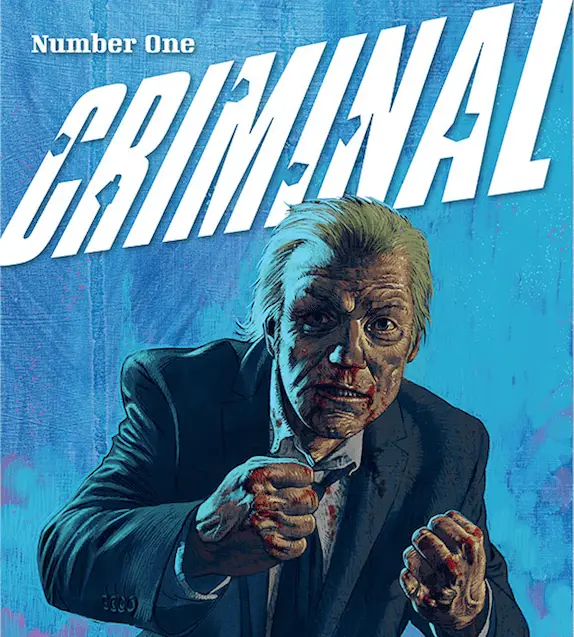[amazon_link asins=’B07JPY59P8′ template=’AiPTProductAd’ store=’aiptcomics-20′ marketplace=’US’ link_id=’53a50950-1119-11e9-9d4e-17d174a4cad3′]
I was dreading writing this review. I’ve never read any of Ed Brubaker and Sean Philips’ previous Criminal material. If you stop reading at this point, I understand. But Brubaker insisted this issue would work well enough for long-time fans or newbies. So I like to think I have a unique position here. Speaking as a new reader of this series: I can say I really enjoyed this nihilistic, pulpy noir.
Brubaker is the master of noir in the comics medium, blending the dark cosmic irony of the Coen Brothers with the intense character studies of Dennis Lehane into his own style that sends-up and revels in crime conventions.

I desperately scribbled down all the characters’s names and their relationships while reading in the hopes of looking up how these protagonists fit into the previous volumes of Criminal. But Brubaker beat me to it with a lovely guide in the back. So fear not new readers!
Now that I know the characters, I’ll tell you a little about the sprawling story. Ricky is a young punk who steals and assaults to get his dad, Teeg Lawless out of jail (who was introduced back in Volume 2). Problem is, Teeg has to contend with Sebastian Hyde, a fella who demands restitution for the stolen party.
There’s a lot more to the narrative, but those are the bones of the situation. Although the comic jumps all around and can come across as self-indulgent, it’s executed so well in every regard, it’s enthralling stuff that makes you want to gladly take a shower afterwards.
I mentioned the Coen’s influence before, and I think that applies exceptionally well to the themes here. The Coens flaunt their Jewish upbringing in most all of their work, using an angry Old Testament god as an unseen force of cosmic, ruthless judgement that cuts down wrongdoers like a scythe. The miserable Criminal cast are either in the throes or are about to be hewn on the threshing floor, caught in a cyclical nature of never-ending greed and egotism.

Yes, these aren’t characters you’d want to meet in a dark alley. But what Brubaker characters are? Here’s a whole line-up of excellently dreadful monsters that you can’t help but feel empathy for as they trudge through life toward fleeting, vain goals just like the rest of us.
There are plenty of conventions present here, but Brubaker melds them together with a flair, using tropes as a springboard for psychological examination. Some of the dialog from Sebastian Hyde is so classic gangster, I could hear Nicolas Cage doing a Humphry Bogart impression from Dog Eat Dog’s absurd final moments. And that’s a…good thing? Yeah, it’s a good thing.
Sean Philips has two modes, like many of the best artists in the medium. There’s his more intricate, detailed (even photo realistic) work like The Fade Out, and then there’s his looser, blotchier style that’s present here: where the shadows and sickly yet garish colors envelop the characters like a hazy nightmare.
I’ve been studying coloring in comics, and the principle of contrasting cool shadows with hot light sources is wonderfully maximized here by Jacob Phillips, who’s doing his father’s coloring (as well as in My Heroes Have Always Been Junkies). There are plenty of chilly blues set against blazing pinks to instill garish discomfort and wonder in the reader.
Join the AIPT Patreon
Want to take our relationship to the next level? Become a patron today to gain access to exclusive perks, such as:
- ❌ Remove all ads on the website
- 💬 Join our Discord community, where we chat about the latest news and releases from everything we cover on AIPT
- 📗 Access to our monthly book club
- 📦 Get a physical trade paperback shipped to you every month
- 💥 And more!














You must be logged in to post a comment.